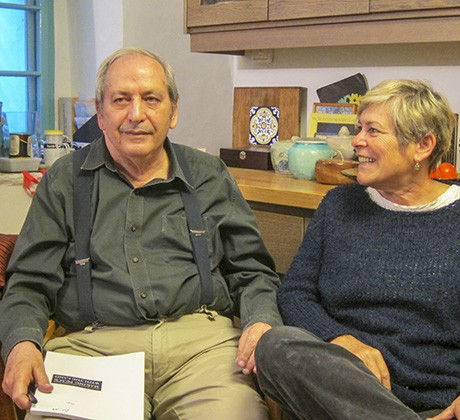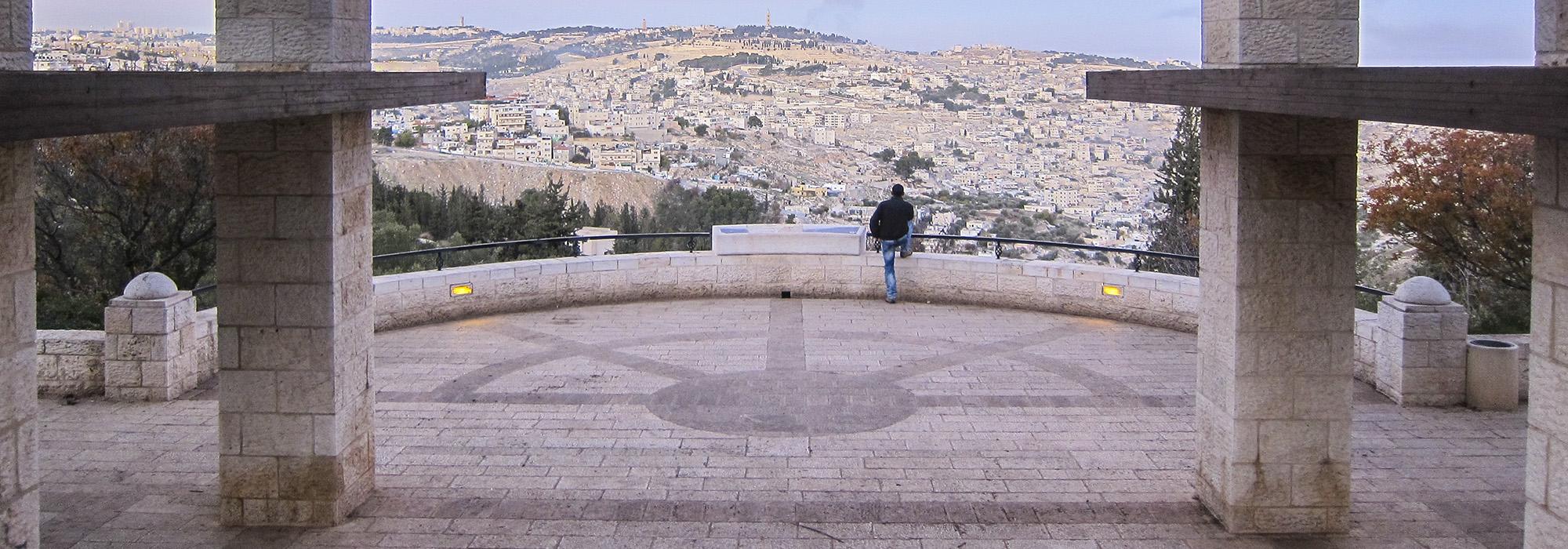Prof. Nurit Lissovsky Says Farewell to Shlomo Aronson
A new year, the end of an era

Shlomo’s impacts on the Israeli landscape are a reflection and distillation of his personality: harmonious, bold and thought-provoking, and, like him, dwelling in their surroundings with humility and profound respect for all preceding things and people.
In the four decades in which he operated, Israel has changed beyond recognition, and Shlomo played a major part in creating the new landscape. His work and world view have led to a turnaround in landscape design: from the Zionist ideal of “We shall carpet thee with gardens” imposed upon a seasonally changing landscape—a European “shield” that stands part and contrasts with the surrounding landscape—to a quintessentially Israeli garden that echoes its physical and cultural surroundings. Not for nothing is he considered, in Israel and abroad, as the person who mapped out and led modern Israeli landscape architecture.
Underpinning all his endeavors (as reflected in the title of his book) was a genuine yearning to “make peace with the land”—peace between the land and its inhabitants, and between its among the inhabitants themselves. A peace between the universal and local; between past and present; between ecology and engineering; between nature and man-made scenery. His design is an expression of a personal attempt to bring reconciliation to a hard and torn country, to a landscape struggling under the weight of history, to what he understood with his sharp senses—earlier than others—as a limited and perishable resource.
Today, the way in which we experience the landscape in gardens, parks, residential areas, recreational resorts and forests, and on promenades and roads is largely the result of his vision and work. A partial list includes the Haas (with Lawrence Halprin) and Sherover Promenades; the Beit Shalom Archaeological Park; the Botanical Gardens; Yad Vashem memorial ground; the Cardo, all in Jerusalem; the Technion Campus; Miriam Spring in Nazereth; the National Parks at Caesarea and Beit Guvrin; Suzanne Dallal Square in Tel Aviv; the central garden at Ben-Gurion Airport; the Sha’ar Hagai interchange; restoration of the burned Jerusalem Forest; Israel National Master Plan #35 (with Asif and Shachar); residential neighborhoods in Modi’in and Beit Shemesh; the Sapir Park in the Arava; Kreitman Square at Ben-Gurion University; the Potash Conveyor at the Dead Sea; the restoration of the phosphate mines in the desert; the “height markers” on the descent to the Dead Sea; and the beach promenade in Eilat—all of these are markers of place and time inscribed by Aronson on the map of the country.
It is impossible to speak of Shlomo without mentioning Sandra, his wife and (in Shlomo’s words) his “ultimate litmus paper” for distinguishing between good and bad, whose sensitivity, love, and inner integrity are embedded not only in the landscapes he created but also in the home where he was treated with endless devotion. Surrounded by love, an embracing family, Itai and Barbara, Ari, Eran, Maya and Georgo, Lito, and their children—his grandchildren, an extended hand, smile, caress, and embrace. The wish that he had expressed many years earlier in his writings—“May they always be close by, to make my life happy,”—was fully realized.
In recent years, before his spirit was overcome, I accompanied Shlomo in his struggle. At first, he insisted on climbing up the stone staircase that rises up to the office—then on rising from his sickbed—in a desire to be updated, to respond, to contribute, to influence. While he never complained about his faltering health, he repeatedly expressed frustration that he would not be able to design new places and no longer challenge decision-makers. He was saddened by the fact that he could no longer continue to speak for, and fight on behalf of, the landscape he loved.
Farewell, Shlomo. Now you are at peace—and your rest, I know, is true.
For me you were—and always shall be—a source of inspiration, a mentor, and a true friend.
Thank you for your vision, creativity, and audacity, which changed the appearance of the country and made it a better place for its people.
Thanks for everything you created and for everything you’ve given. Blessed be your memory.
Nurit Lissovsky, September 13, 2018.



